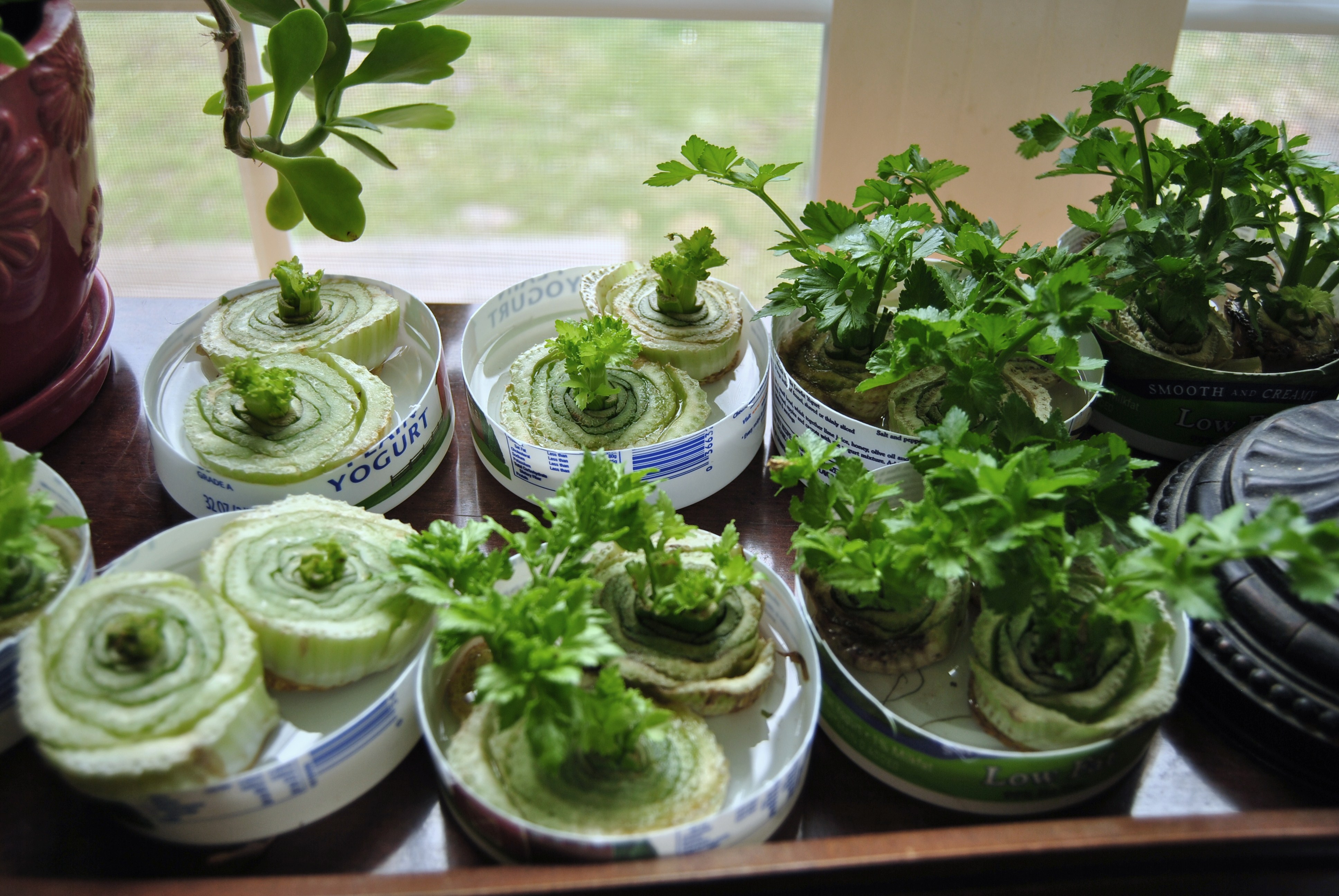 photo credit: FOODGARDENINGNATURE
photo credit: FOODGARDENINGNATURE
Take a look at all the produce you can re-grow below.
Leeks, Scallions, Spring Onions, and Fennel
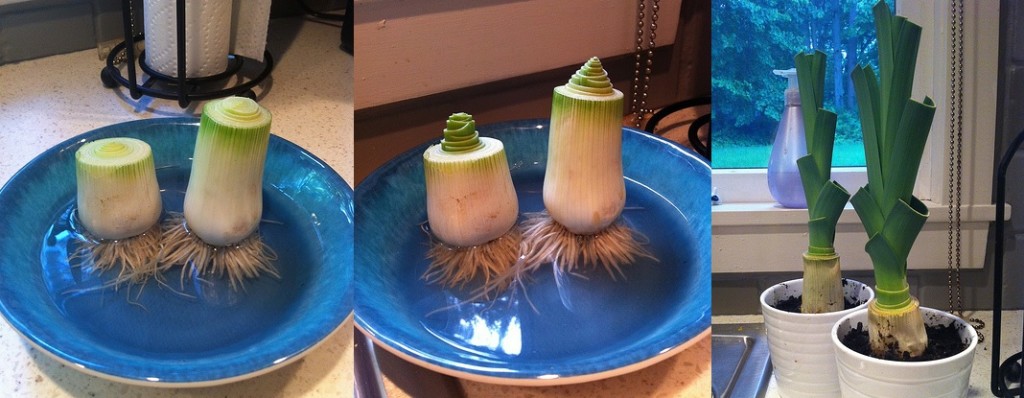
Photo Credit: Eating the Week

Leeks, scallions, spring onions, and fennel can all be re-grown from their white root base. Just stick the root base in a glass jar or bowl, add water, and put it where it will get plenty of light. Freshen up the water every other day and soon you will have new veggies to enjoy all over again.
Lemongrass

You start off by placing the root end of the lemongrass in a glass jar with a little water. Place it in a sunny place and refresh the water every other day. In about a week, you should see new growth start to appear. This is when you transplant your lemongrass into a pot with soil. Leave it outside where it can get a lot of sun.
Harvest your lemongrass when the stalks are about a foot tall. Cut off what you need, but leave the roots in place because it will keep on growing.
Celery, Bok Choy, Romaine Lettuce, and Cabbage
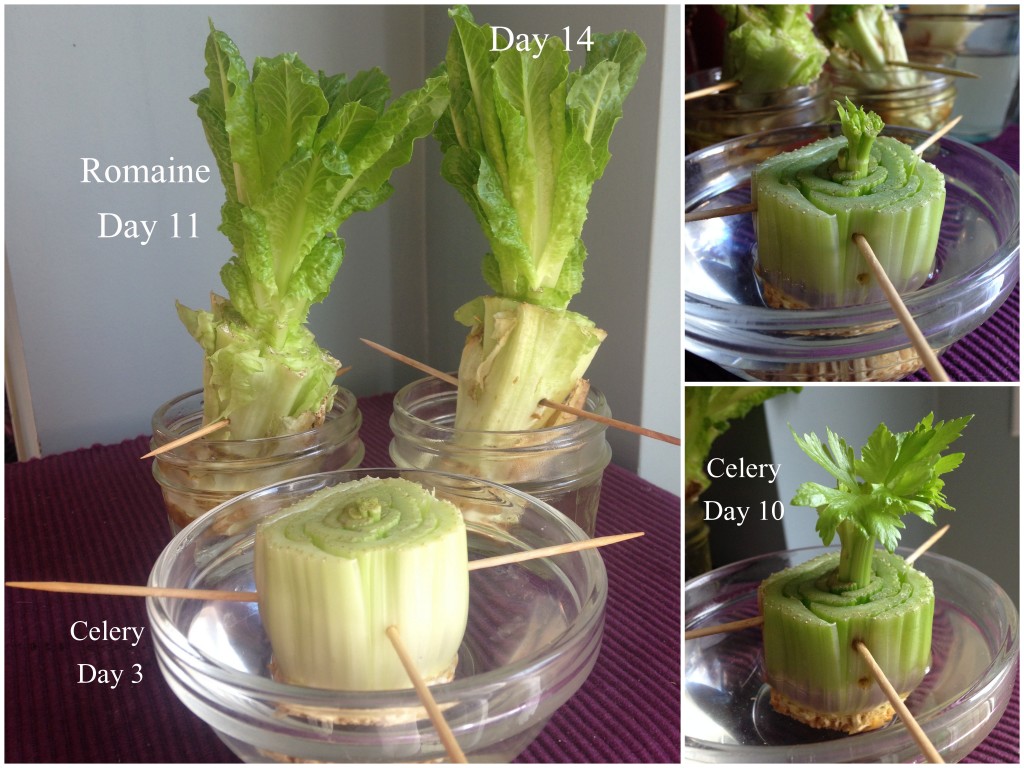
Celery, bok choy, romaine lettuce, and cabbage will also re-grow from the white root end. Just cut off what you normally eat and place the root end in a shallow bowl of water. Cover the roots but not the top of the cutting. Place it in the sun, but spray the cutting with water to keep the top moist.
In about a week, it is time to transplant the plant into soil. Plant so that just the leaves are showing. Within a few weeks, it will sprout a new head.
Celery, Bok Choy, Romaine Lettuce, and Cabbage can also be directly planted into the ground, but the soil needs to be kept very moist until new shoots appear.
Ginger
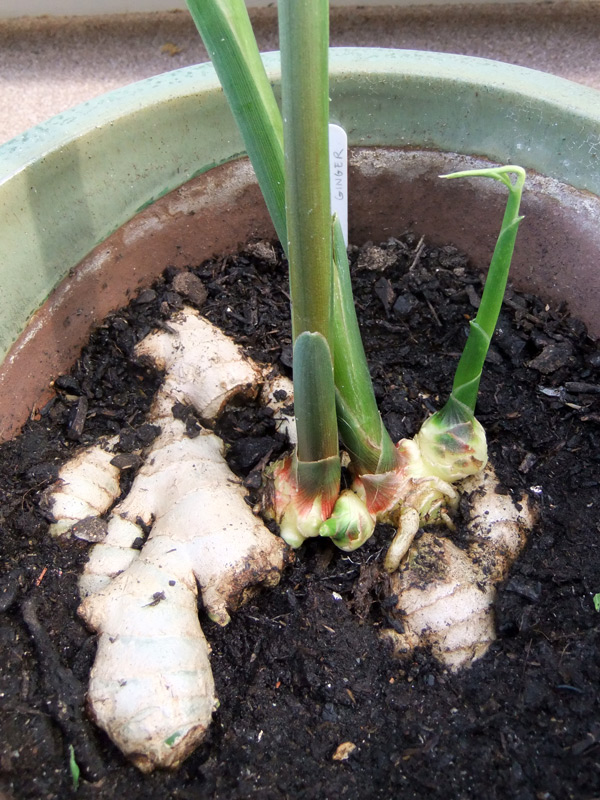
Ginger is super easy to re-grow. All you have to do is plant a piece of ginger rhizome in potting soil with the smallest bugs facing upwards. Rhizome is the bit of ginger you cook with. Place the ginger in non-direct sunlight and in a warm, moist environment.
You can harvest ginger once the plant is established. Pull up the whole plant, remove a piece of rhizome, replant it, and repeat.
Potatoes

If you have potatoes that sprouted eyes suddenly and got all wrinkly, don’t throw them away. These are perfect for growing new potatoes. Cut them into sections with at least two eyes on each piece. Then plant them in high-nutrient soil at about 8 inches deep. You can get high-nutrient soil by adding compost.
Potato plants will spread out as they grow, so it is important to cover any new roots with soil.
Garlic

Planting and harvesting garlic is similar to ginger. Just place the garlic root down into soil. Garlic likes warmth with plenty of direct sunlight and will easily root itself and produce new shoots. Once the plant is established, cut back the shoots. This will help the plant focus on building a big, tasty garlic bulb.
Just like with ginger, pull up the plant, take what you need, replant it, and repeat.
Onions

Onions are one of the easiest vegetables to re-grow. Cut off the root end of the onion ½ inch above the root line. Plant the root portion of the onion in a sunny spot in your garden with only a little soil on top. If you live in a colder climate, plant it in a pot and keep it indoors. The onion roots will grow you a new onion. You can cut off the roots and replant for as long as you want.
Sweet Potatoes

Sweet potatoes produce eye-shoots like a potato. Bury the sweet potato under a thin layer of soil in a moist, sunny location. Shoots will appear in about a week. Once the shoots reach about four inches in height, remove them and replant them with about a foot separating each plant. Sweet potatoes take about four months to be ready.
Warning: Slugs love sweet potatoes, so watch out for them.
Many commercial sweet potatoes are sprayed so they do not produce eyes. It is best to use organic.
Mushroom
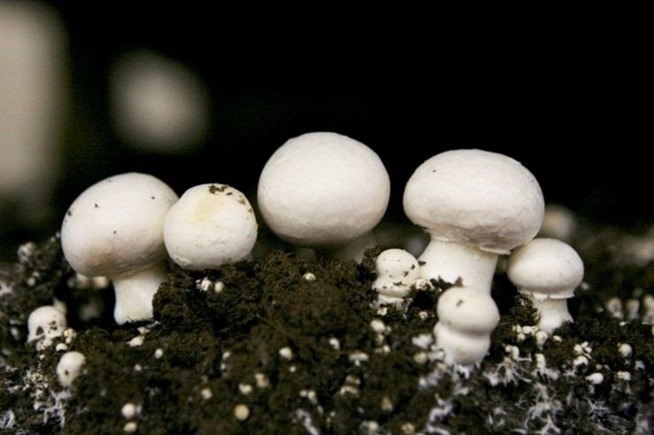
Mushrooms are probably the most difficult veggies to re-grow. This is because they enjoy warm humidity and nutrient-rich soil just like all the other fungus they have to compete with. For this reason, re-growing mushrooms works best in cooler environments.
To make nutrient-rich soil, mix it with compost. Remove the head of the mushroom and plant the stalk. Leave just the very top exposed. If all the conditions are correct, your mushroom will start growing in a couple of days. If not, it will be very clear that the mushroom is beginning to rot.
Pineapple

Finally a fruit! Re-growing pineapples will take some time (2-3 years), but it is worth it.
You re-grow pineapple from the leafy top of the fruit. It is important to make sure no fruit remains on the pineapple top as it will rot after planted. Slice small horizontal sections until you see the root buds.
Pineapple plants like a warm and well drained environment and you should start to see growth within a few months.
To learn more about growing vegetables from produce, take a look at this video from Growing Your Greens.
Blog via DavidWolfe.com